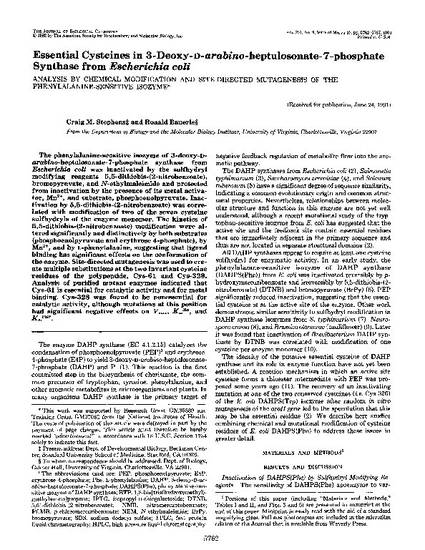
The phenylalanine-sensitive isozyme of 3-deoxy-D-arabino-heptulosonate-7-phosphate synthase from Escherichia coli was inactivated by the sulfhydryl modifying reagents 5,5-dithiobis-(2-nitrobenzoate), bromopyruvate, and N-ethylmaleimide and protected from inactivation by the presence of its metal activator, Mn2+, and substrate, phosphoenolpyruvate. Inactivation by 5,5-dithiobis-(2-nitrobenzoate) was correlated with modification of two of the seven cysteine sulfhydryls of the enzyme monomer. The kinetics of 5,5-dithiobis-(2-nitrobenzoate) modification were altered significantly and distinctively by both substrates (phosphoenolpyruvate and erythrose 4-phosphate), by Mn2+, and by L-phenylalanine, suggesting that ligand binding has significant effects on the conformation of the enzyme. Site-directed mutagenesis was used to create multiple substitutions at the two invariant cysteine residues of the polypeptide, Cys-61 and Cys-328. Analysis of purified mutant enzymes indicated that Cys-61 is essential for catalytic activity and for metal binding. Cys-328 was found to be nonessential for catalytic activity, although mutations at this position had significant negative effects on Vmax, KmMn, and KmPEP.
